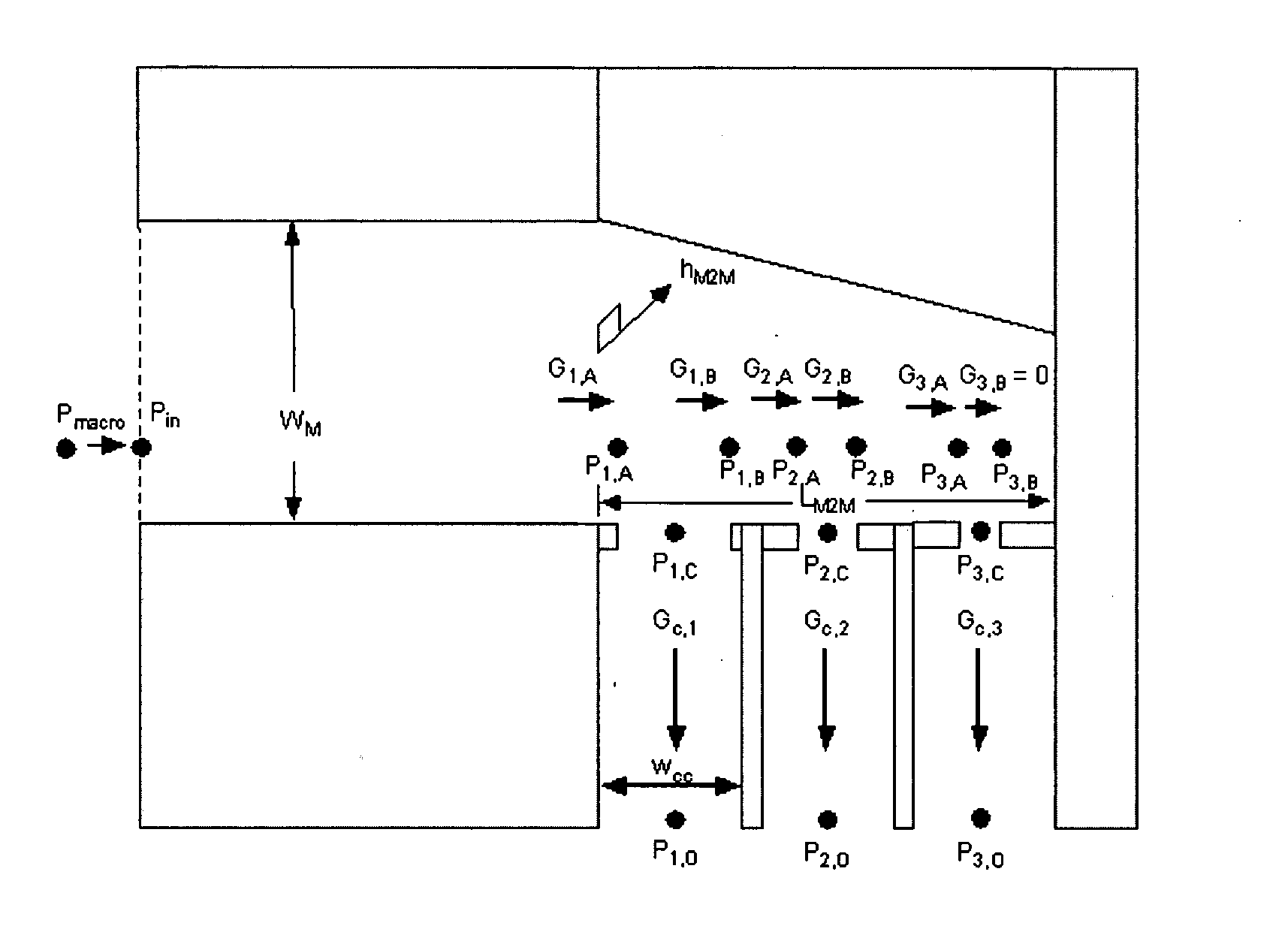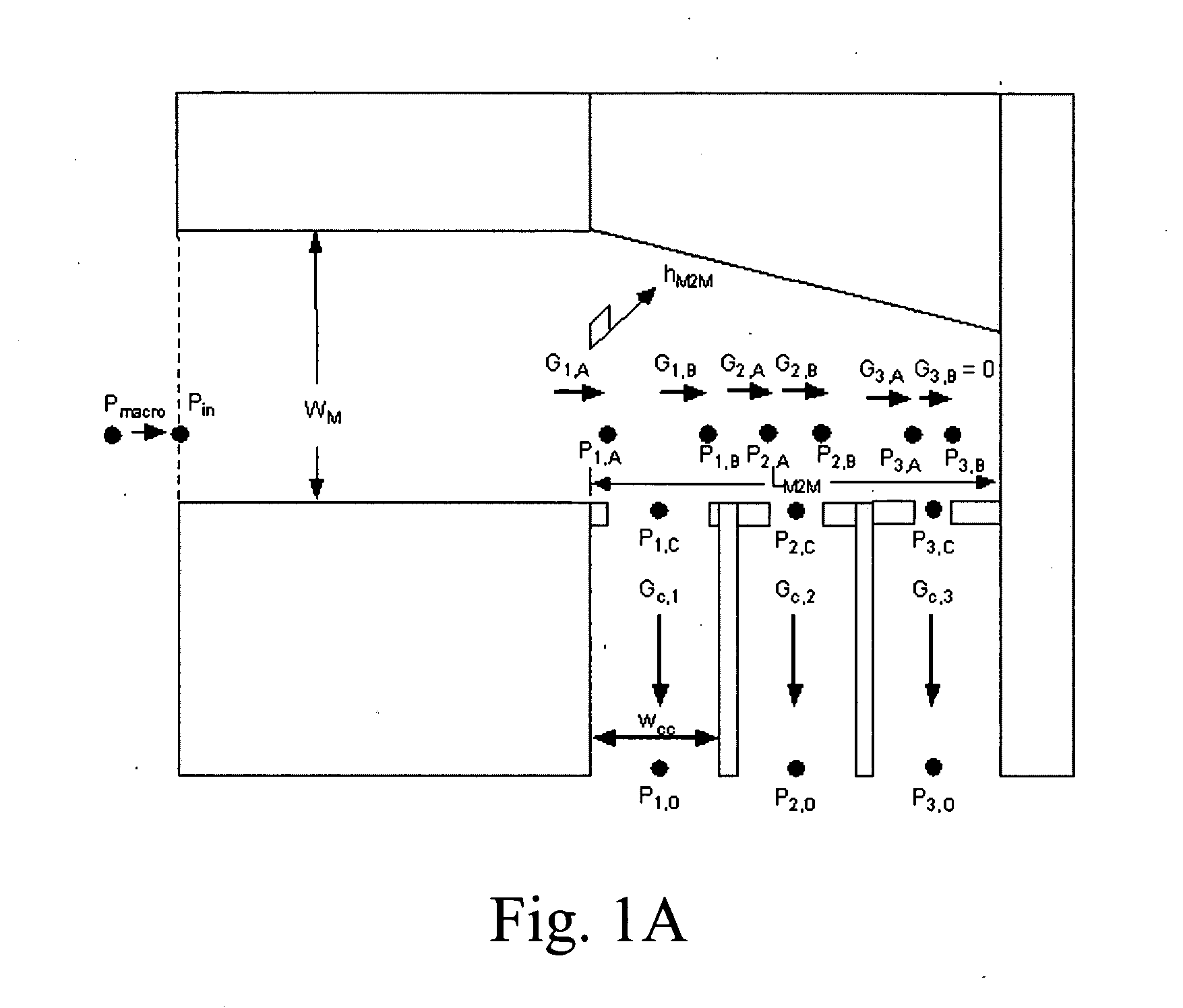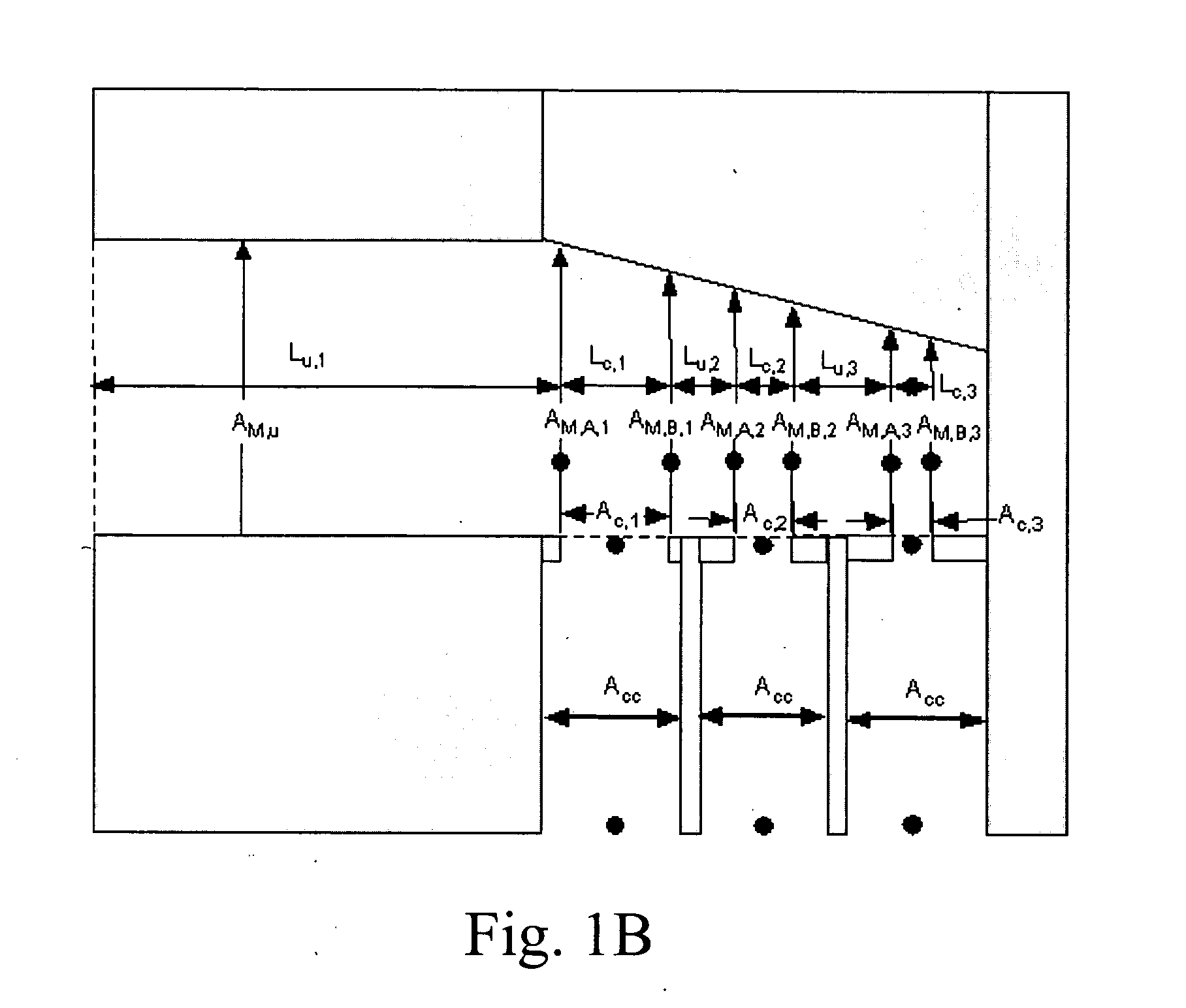Manifold designs, and flow control in multichannel microchannel devices
a microchannel device and multi-channel technology, applied in sustainable manufacturing/processing, instruments, laboratory glassware, etc., can solve the problems of insufficient design for obtaining highly equal flow from a header, adding to the flow distribution challenge, etc., to achieve equal flow distribution, reduce manifold pressure drop, and reduce costs
- Summary
- Abstract
- Description
- Claims
- Application Information
AI Technical Summary
Benefits of technology
Problems solved by technology
Method used
Image
Examples
example 1
Comparative Calculated Example
[0338] Calculations have been conducted based on a design shown in FIGS. 51 to 64 of Golbig published patent application U.S. 2002 / 0106311A1. In this design, a fluid flows into two separate headers of the same dimensions. The header intersects at a right angle with the ends of connecting channels of varying widths; the widths varying from widest at the start of the header to the narrowest channel at the end. The object of this design was to enable “viscous fluids to be processed in parallel fluid channels with substantially equivalent residence time distributions.” The varying channel width tailors the connecting channel flow resistance to compensate for the differences between the header and footer pressure for a given fluid viscosity and flow rate, adding resistance to channels with larger pressure difference driving forces and less resistance to those with lower pressure difference driving force.
[0339] While the publication does not specifically de...
example 2
[0365] This example describes the predicted performance of the SMR module flow distribution discussed earlier in the application.
[0366] In this design, the gate widths grow wider as the length of a sub-manifold's upstream length increases, and the width of a sub-manifold increases as the sub-manifold's upstream length increases. By using the widths of both sub-manifolds and gates within sub-manifolds, the overall pressure drop seen in each sub-manifold was equalized in both air and fuel header M2M manifolds. The sub-manifold with the shortest path length (#1) across the shim has the thinnest sub-manifold width and the thinnest gates, while the sub-manifold with the longest path across the shim (#6) has the widest sub-manifold width and widest gates. The relative dimensions for the manifolds are given below in Table 1.
TABLE 1Dimensions for the combustion M2M air and fuel sub-manifoldslisted per sub-manifold number. Gate number is given in the orderthat the manifold stream sees the...
example 3
[0376] This example is a calculated example based on a sub-manifold that has the following features: L-manifold header, like that described; constant width, height of M2M manifold; 3 “gates”, each serving four connecting channels downstream of the distribution section; and high momentum flow (Entrance Mo=0.7>>0.05). The conditions are: an outlet pressure of 1 atm (101325 Pa); air flow of 38.22 SLPM; and 20° C.
[0377] The header M2M manifold dimensions are: [0378] 0.041“height, made from a 0.017″ and a 0.023″ shims and a 0.001″ tall gasket [0379] 0.400″ wide for the entire manifold (Wm) [0380] AM=1.04×10−5 m2 [0381] Lengths: [0382] From macro manifold connection to first gate: 1.250″ (=Lu,1) [0383] From macro manifold connection to end of the manifold 3.700″[0384] Lengths for friction losses: [0385] Lc,1=0.270″[0386] Lc,2=0.250″[0387] Lc,3=0.245″[0388] Lu,1=1.250″[0389] Lu,2=0.680″[0390] Lu,3=0.692″
[0391] Gate and distribution section dimensions: [0392] Center position of gates from ...
PUM
| Property | Measurement | Unit |
|---|---|---|
| height | aaaaa | aaaaa |
| length | aaaaa | aaaaa |
| Reynolds number | aaaaa | aaaaa |
Abstract
Description
Claims
Application Information
 Login to View More
Login to View More - R&D
- Intellectual Property
- Life Sciences
- Materials
- Tech Scout
- Unparalleled Data Quality
- Higher Quality Content
- 60% Fewer Hallucinations
Browse by: Latest US Patents, China's latest patents, Technical Efficacy Thesaurus, Application Domain, Technology Topic, Popular Technical Reports.
© 2025 PatSnap. All rights reserved.Legal|Privacy policy|Modern Slavery Act Transparency Statement|Sitemap|About US| Contact US: help@patsnap.com



